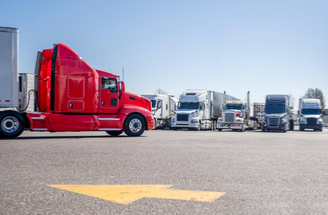Introduction
In the world of commercial trucking, insurance is a cornerstone of protecting the interests of trucking companies and drivers alike. Two important facets of insurance within this industry are Commercial Trucking Insurance and New Authority Truck Insurance. This article aims to provide a comprehensive overview of both types of insurance and the differences that make them distinct in the world of trucking.
Commercial Trucking Insurance: The Foundation of Safety
Commercial Trucking Insurance is the backbone of protection for businesses that operate a fleet of commercial vehicles. It is designed to cover a broad range of potential risks and liabilities, ensuring the safety and security of both drivers and the business. Here are some key features of Commercial Trucking Insurance:
- Liability Coverage: This is the foundation of any commercial trucking insurance policy. It provides protection for bodily injury and property damage in the event of an accident for which the insured is at fault.
- Physical Damage Coverage: This component covers the cost of repairing or replacing a commercial vehicle in case of an accident, irrespective of fault.
- Cargo Coverage: Cargo insurance safeguards the value of goods being transported by the insured vehicles. It provides coverage in case of damage, theft, or loss of cargo.
- Trailer Interchange Coverage: This coverage is essential for trucking companies that exchange trailers with other companies. It provides protection against damage or loss of the trailers involved in these exchanges.
- Employee Coverage: Many Commercial Trucking Insurance policies offer protection for employees, including the drivers operating the commercial vehicles. This includes coverage for work-related injuries.
New Authority Truck Insurance: Meeting the Needs of Startups
New Authority Truck Insurance is a specialized insurance product designed for trucking companies that are just starting in the industry and obtaining their authority (MC number). It caters to the unique needs and challenges that new entrants face. Here are some key features of New Authority Truck Insurance:
- Customized Coverage: New Authority Truck Insurance is tailored to meet the specific needs of startups. It includes options like liability coverage, physical damage coverage, cargo coverage, and more.
- Cost-Effective Solutions: As startups often face budget constraints, New Authority Truck Insurance offers cost-effective options to ensure that new businesses can meet regulatory requirements without breaking the bank.
- Adjustable Coverage: This insurance allows startups to adjust their coverage as their business grows and they expand their operations.
Differences and Use Cases
- Audience: Commercial Trucking Insurance is aimed at established trucking companies that have been in the industry for some time. New Authority Truck Insurance is specifically for startups and newly established businesses obtaining their authority.
- Scope: Commercial Trucking Insurance offers comprehensive coverage suitable for larger, more established fleets. New Authority Truck Insurance provides basic coverage for startups, offering a cost-effective entry point into the industry.
- Flexibility: New Authority Truck Insurance is designed to be flexible, allowing startups to adjust their coverage as they grow. Commercial Trucking Insurance may offer more standardized options.
Choosing the Right Insurance
Selecting the right insurance is crucial in the trucking industry. For established trucking companies, Commercial Trucking Insurance provides comprehensive coverage to protect against a wide range of risks. For startups, New Authority Truck Insurance offers a budget-friendly way to meet regulatory requirements and protect the business as it gets off the ground.
conclusion
understanding the distinctions between Commercial Trucking Insurance and New Authority Truck Insurance is essential for trucking companies, whether they are long-established players or new entrants to the industry. Tailoring your insurance choice to your specific needs and circumstances is a key part of navigating the road ahead in the world of commercial trucking.





